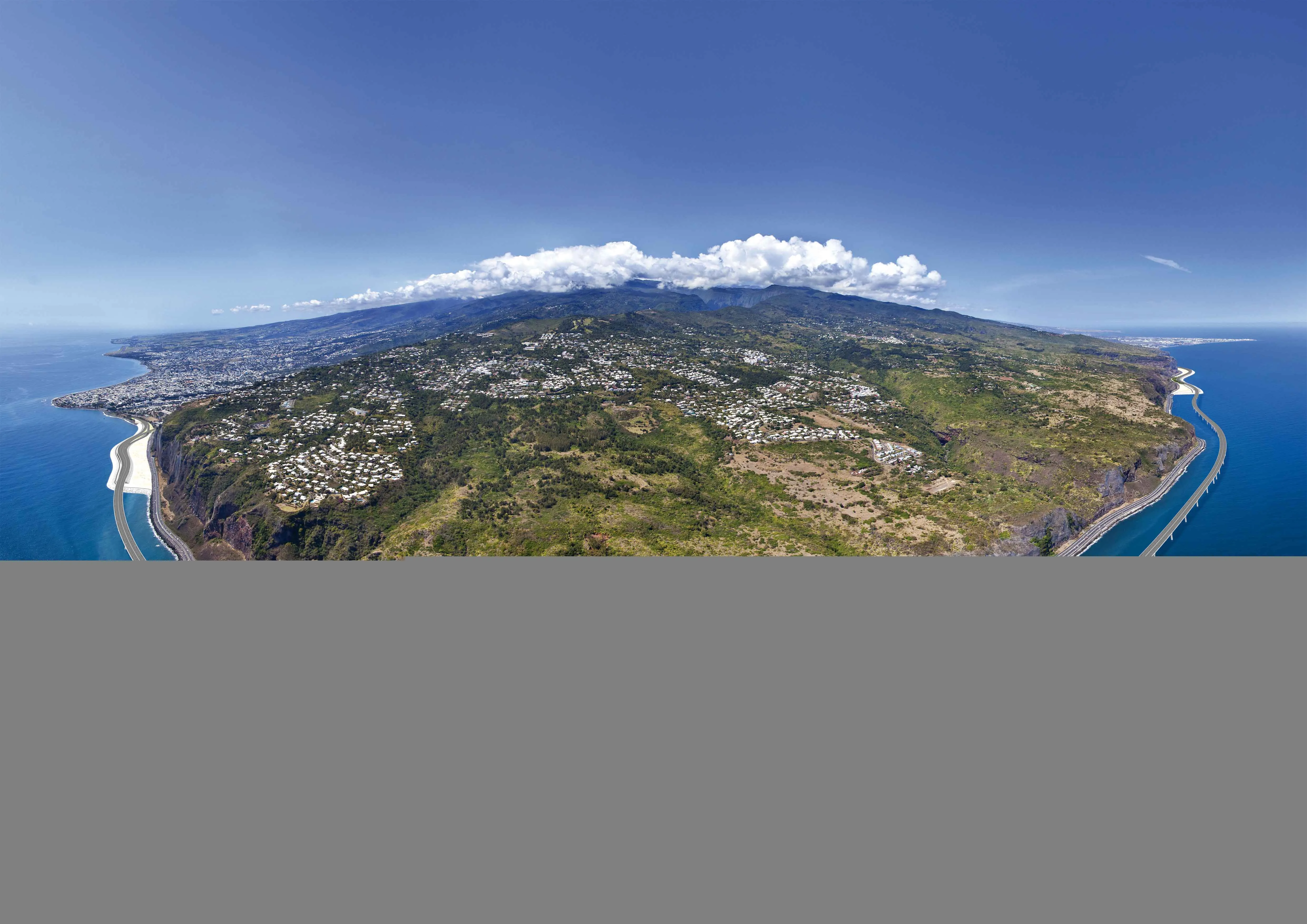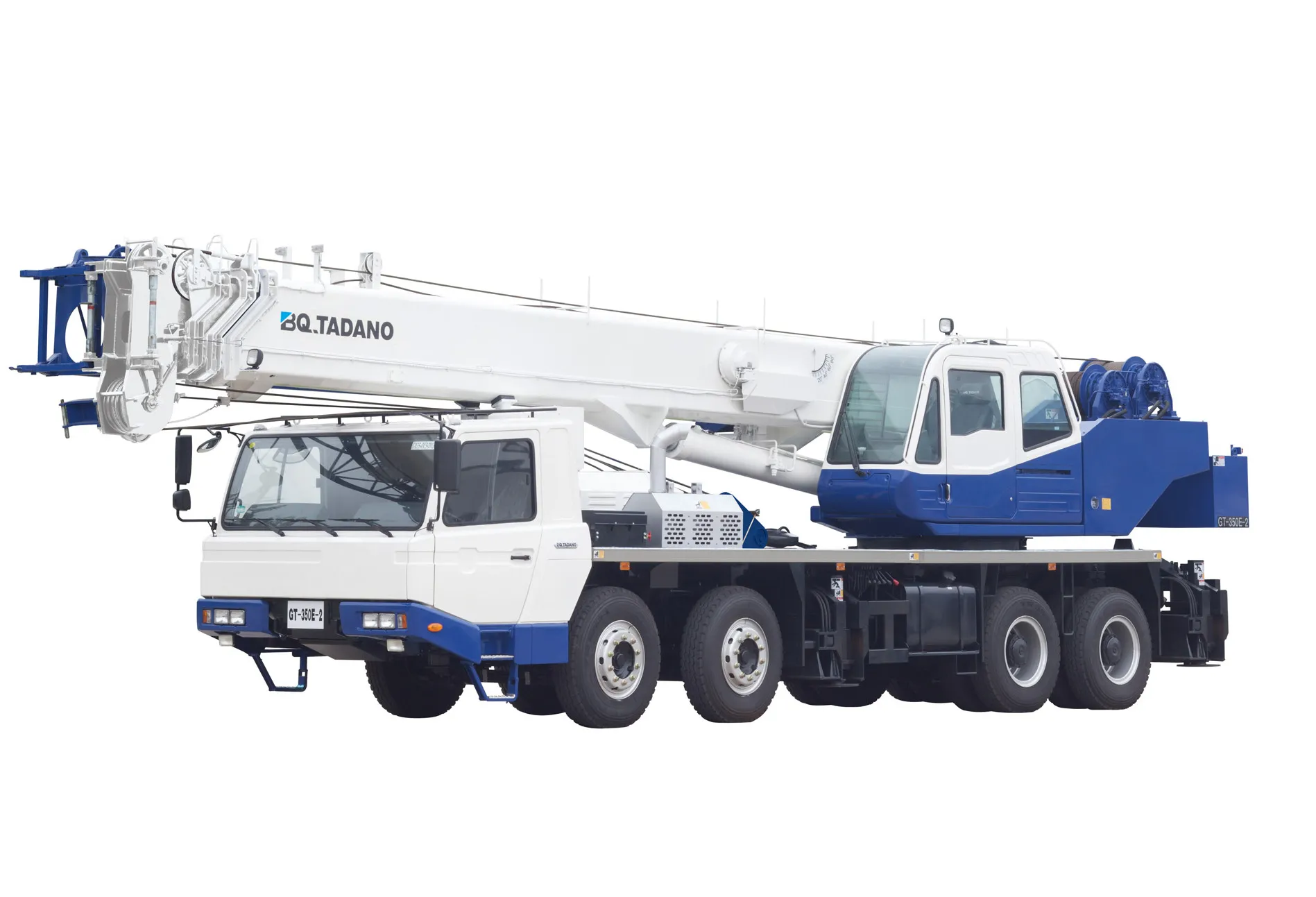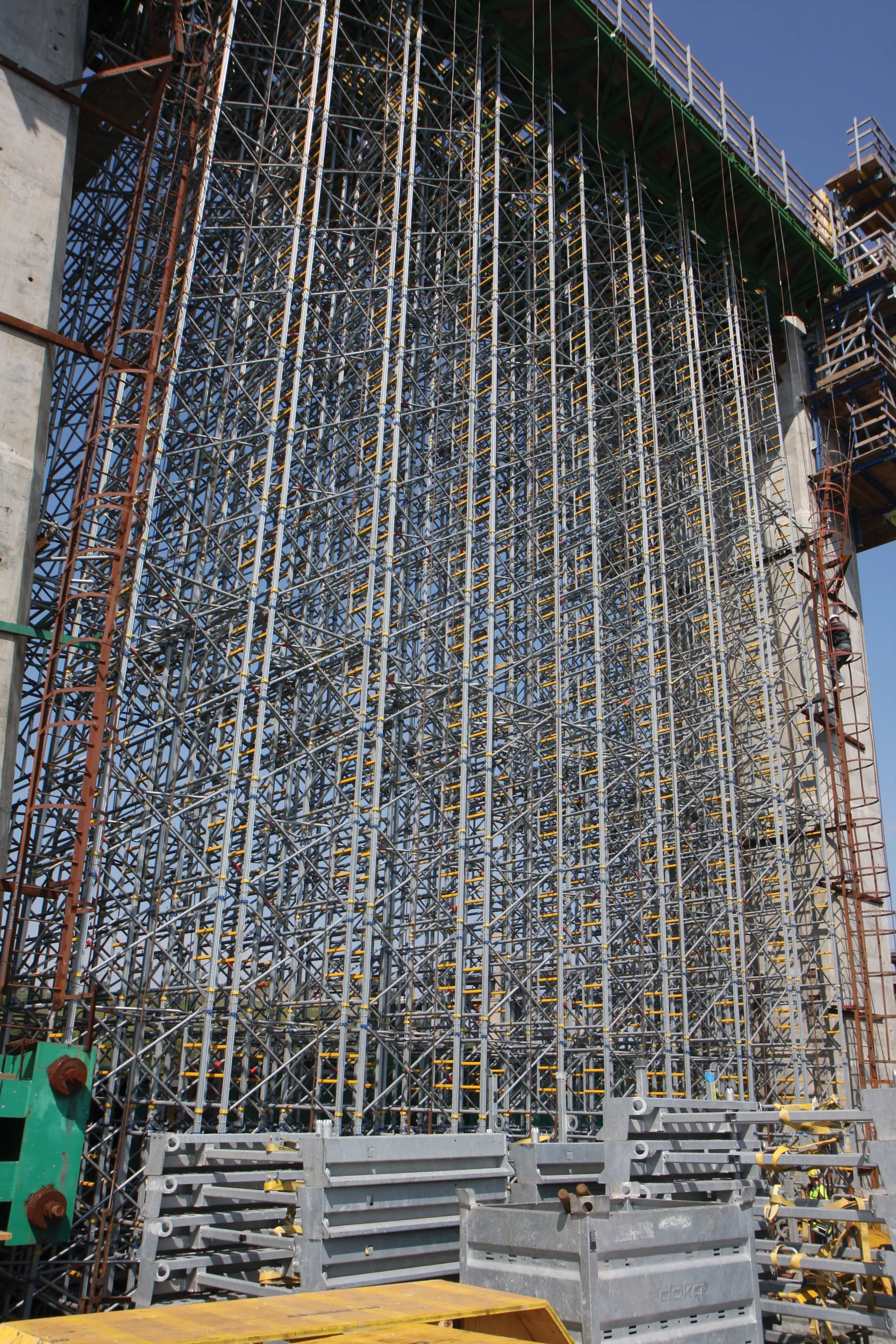
Work on a new €1.7 billion coastal road is underway around France’s Reunion Island
This new 12.3km highway (Route du Littoral) will have three lanes in each direction when it is complete in 2018. The new offshore highway connects Saint Denis, the administrative capital of La Réunion, with La Possession.
This is a significant project and involves the use of a large fleet of heavy machinery.
Meanwhile equipment from
One of the most complex aspects of the work is the construction of the 5.4km viaduct on columns rising out from the Indian Ocean. This is being built so that it will be able to withstand 144km/h hurricane winds as well as waves of up to 10m in height. The project is being carried out by French consortium
The crane fleet in use on the project comprises two Potain MD 485B M20s, two MDT 368 As, one MD 560 B, a Potain k5-50C, a Manitowoc 12000E-1 crawler crane, seven Grove all-terrain cranes and two Grove rough-terrain cranes. Installation of the Potain cranes was completed in September of 2015, including setting up and erecting the jibs. The 16 cranes were supplied by contractors Vinci Construction Grands Projets and Bouygues TP which own some of the units and Grues Levages Investissements (GLI) which also provided cranes for this high-profile project on rental contracts. GLI is Manitowoc’s official French dealer for Reunion Island, Mayotte and Mauritius and has invested heavily in supplying the cranes for this project.
The colossal project faces many challenges as the structure is being built on a maritime site, explained Christophe Simoncelli, Manitowoc vice president of sales for Western Europe and French speaking Africa, “Manitowoc has provided exceptional crane solutions as well as a proactive approach to managing this project,” he said.
The Potain MD 485B M20 is a 20tonne capacity top-slewing tower crane, with an 80m jib. It has been fitted with a 60m boom and is working at a height of 45m. The MDT 368 A is the largest of the topless MDT range with a maximum jib length of 75m while the MD 560 B is a 25tonne capacity tower crane and can lift up to 5.4tonnes at jib end. The Potain k5-50C is a 20tonne capacity tower crane with a 60m jib length.
The Manitowoc 12000E-1 is a 110tonne capacity crawler crane and is fitted with a 70m boom. The Grove all-terrain cranes on the project include a GMK2035, a GMK3060, a GMK4080-1, a GMK 5130-2, a GMK4100L, a GMK3055 and a GMK5220 – these cranes range in lifting capacity from 35tonnes to 220tonnes. The two rough-terrain cranes on the jobsite are an RT540E and an RT760E. The RT540E comes equipped with a 9.8-31m four-section full power boom while the RT760E offers a 55tonne maximum capacity.
The project is also using the world’s largest offshore overhead travel crane. This unit has been developed and manufactured by Enerpac and has been mounted on the Zourite jack-up barge. The Enerpac Over Head Travel Crane (OHTC) comprises two pairs of lifting beams, with an overall width of 30m, and a lifting capacity of 4,800tonnes for lifting, moving and lowering the concrete blocks for the offshore highway.
The Zourite jack-up barge has been transported to Reunion Island aboard the Offshore Heavy Transport’s Hawk semi-submersible vessel. The Over Head Travel Crane (OHTC) comprises two pairs of lifting beams, with an overall width of 30m, and a lifting capacity of 4,800 tonnes for lifting, moving and lowering the concrete blocks for the offshore highway.
The Enerpac OHTC will be used on the Zourite jack-up barge. Lifting and lowering is accomplished with a reeved winch system, based on eight grooved drum winches.
Longitudinal travelling of the gantry uses a trolley arrangement comprising two trolleys per lifting beam. Each trolley is propelled with hydraulic drive motors and planetary gearboxes. The wheels run on two parallel rails bolted onto the barge’s runway beams. Side shifting of the gantry hoists in a continuous movement is achieved using long stroke cylinders.
OHTC testing has been conducted on one of the pairs of beams and included lifting 1100Te blocks, synchronised lifting of the block with a hook from each beam, and checking the crane’s positioning, lifting/lowering accuracy to 1mm.
The coastal highway has been designed to replace the existing road built at the foot of a cliff that links the commercial port of Pointe des Galets to the capital Saint-Denis and the Roland Garros international airport. Currently, the road is forced to close up to 40 times/year due to landslides and high waves.
The new highway is expected to better cope with traffic demands, as well as being more resilient. The viaduct mounted on columns in the sea will not be subject to closure due to landslides. However, severe storms may cause traffic delays to drivers.








